
Echo Camp: Antarctica's Pinnacle of Luxury in the Uncharted Wilderness
by Travis Levius
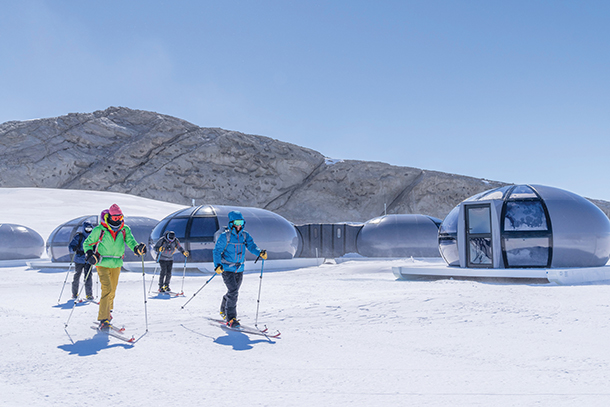
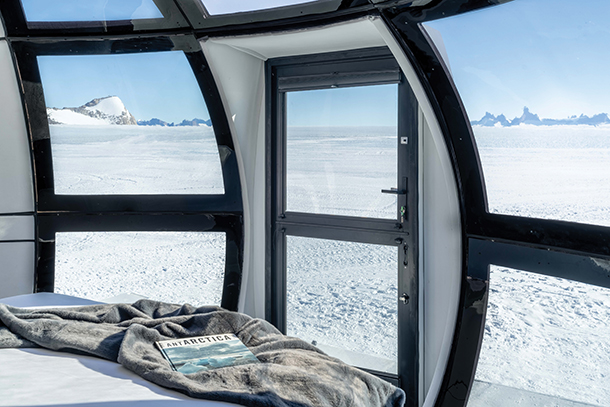
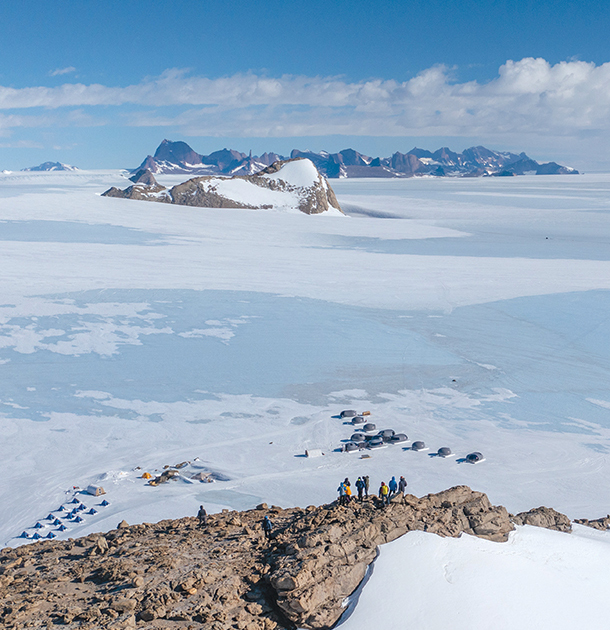
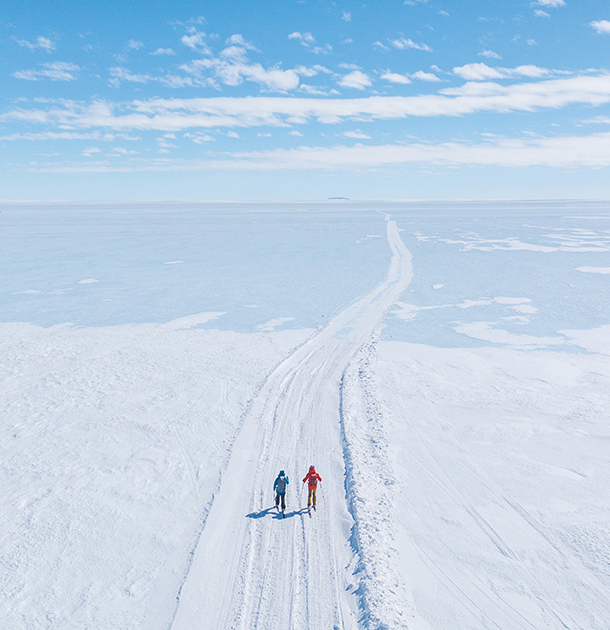
The long-awaited space tourism boom, as it stands, has yet to fully take off. A backlog of high-net-worth adventurers still anticipate piercing through the world’s atmosphere for a glimpse of the extraterrestrial. Meanwhile, deep in remote Antarctica, the galactic-themed Echo Camp offers an otherworldly preview of life beyond Earth on Mother Earth.
Echo, launched in December 2022, is the third Antarctica lodge from White Desert, a pioneering eco-luxury tour operator run by British polar explorer couple Patrick and Robyn Woodhead. Having braved biting Antarctic storms in makeshift tents and dwindling supplies on their early personal expeditions, the venturesome duo sought to draw travelers to the White Continent beyond the typical cruise ship routes, but knew comfort would be a prerequisite. Today, the carbon-neutral company is the only one to provide commercial private jet service to Antarctica (via Cape Town) and is the continent’s sole luxury lodge outfitter.
Instead of emulating the 20th-century, explorer-chic look of White Desert’s debut flagship camp, Whichaway, and 2021’s Wolf’s Fang (now used primarily for transit), space age–inspired Echo looks to the future: six black ellipsoid Sky Pods and a commander unit–style hub surrounded by snow-dusted nunataks and boundless icy white terrain. The place could double as a stylish lair for a scene in Star Wars, or any sci-fi space blockbuster. Echo’s direct inspiration came from moon-landing astronaut and former White Desert guest Buzz Aldrin, having shared with the Woodheads that their slice of mountainous Antarctica reminded him of the lunar landscapes he once explored. Echo is now the most luxurious base for onward excursions to coastal emperor penguin colonies in Atka Bay and the geographic South Pole—two of White Desert’s flagship destinations reached via a refitted Basler BT-67. Like its sister lodges, Echo is a modular, leave-no-trace camp that vanishes until operating season (late November to early February) with utmost consideration of the fragile environment.
Every White Desert journey begins in Cape Town. Mandatory safety and orientation briefings are held in a rotating list of Cape Town’s premier luxury hotels, and provide an opportunity for guests to meet other excited guests from around the world, whether those on the ultimate seven-day South Pole & Emperors track at Echo or Whichaway Camp, or those spending just three hours on Antarctic land with The Greatest Day package. The briefings also double as a baggage inspection, ensuring everyone’s armored with soft-sided bags full of thermal, wool-lined, waterproof, and windproof gear to combat Antarctica’s often inhospitable temperatures and gusts. Whenever Antarctica’s temperamental weather is clear enough to fly and land safely on the thick blue ice of Wolf’s Fang Runway, the White Desert team provides the transfer time to arrive at Cape Town’s private jet terminal to board either an intimate Gulfstream G550 or the gargantuan Airbus A340-300, with the latter also shuttling staff (there are 85 team members from nearly 20 nationalities during the season) to the camps and bases. The takeoff for the five-hour flight marks the last time until the return that guests see a dark night sky, and enjoy Internet access.
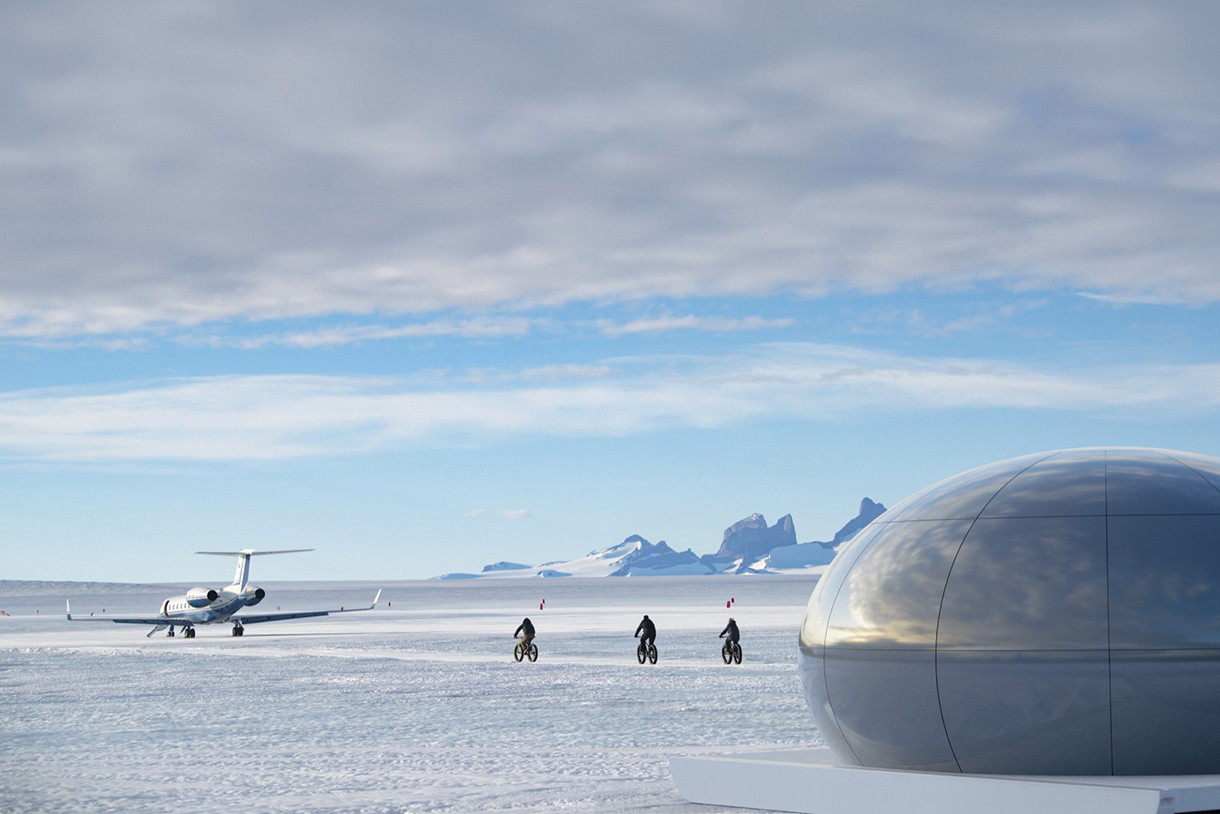
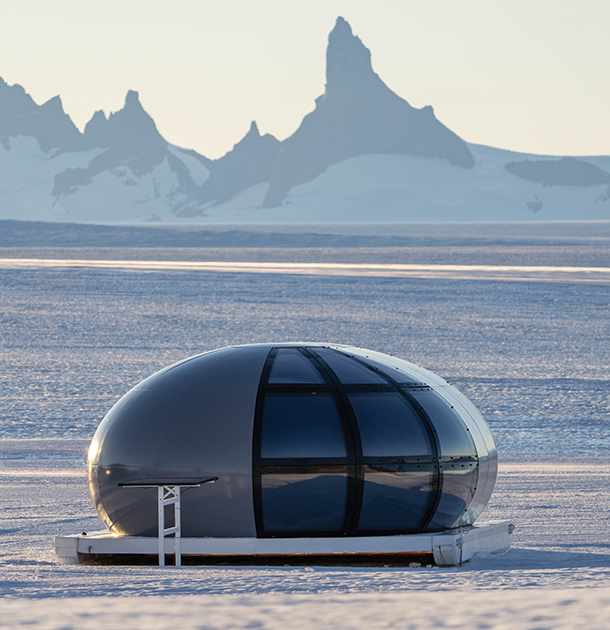
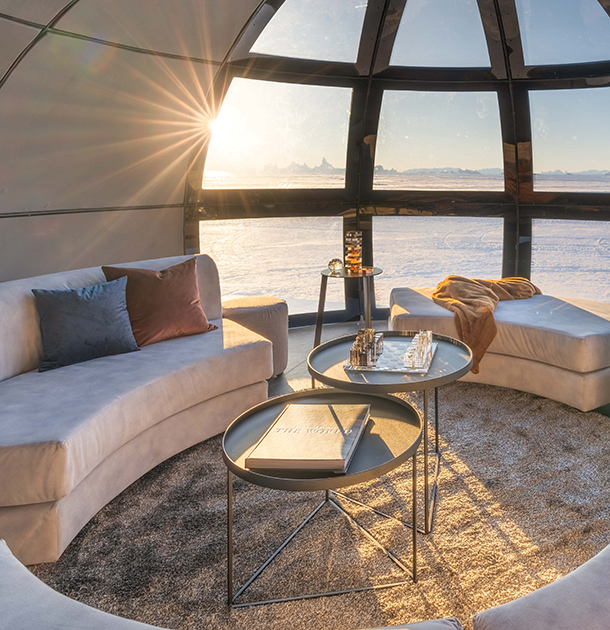
Flights pass Antarctica’s pristine and brittle white coastline and interior mountain ranges before finally landing on Wolf’s Fang Runway. An adapted ice truck awaits to transport Echo guests on a five-minute ride to a surreal scene of carbon-composite bubble pods in one of Earth’s most remote areas. In a late-December safety briefing, Patrick Woodhead shared that Echo Camp’s location, on Queen Maud Land, “is like the ‘dark side’ of Antarctica. Where you’re going is the least explored. We have mountains all around us that no one has ever climbed before, and you can’t really get there by ship unless it’s a supply vessel.” Echo is bookended by two massive, hike-able brown rock formations protruding from glaciers, part of the Henriksen Nunataks. Several miles ahead to the left reveal a row of vertiginous, jagged peaks, which break the boundless horizon of white. The sight of this untrammeled landscape is all the more dramatic through Echo’s series of curved, floor-to-ceiling glass panels in every residential and communal pod.
Echo hosts up to 12 guests among six Sky Pods, semi-ensuite bubble accommodations offering modern comforts with a dash of retro-futurism. Each unit is heated and equipped with one or two beds, a lounge area, ample storage space, and a washroom. There are no bad viewpoints from any accommodation, allowing one to marvel at the landscape from the comfort of their bed.
The communal portal, collectively known as The Cosmos, is Echo’s central hub. Its starfish-like layout comprises a dining room, a bathroom, and a shower pod with water supplied by melted snow, and two glamorous, art-filled lounge areas. Curated details abound: The main reception’s circular floor and centered bench depict a map of Antarctica, with the heightened bench mirroring the continent’s polar plateau region where the South Pole sits. Bronze sculptures from Cape Town–based Stanislaw Trzebinski range from sci-fi-hero–resembling characters to abstract sea organisms. Among assorted curios—fossils, crystals, contemporary chess board pieces—the most striking item is the boulder-sized installation from Los Angeles–based British artist Anthony James, housed in the Observator Pod. Made of glass, steel, and LED lights that yield trippy, shifting geometric shapes with an infinity effect, it’s one in-house feature that can compete with the stirring, lunar-like vistas surrounding the camp. Also in the muted, jewel-toned Observator pod is the bar stocked with spirits (including the Antarctic-themed Shackleton Whisky) and a television/media console where guides conduct presentations.
In the rear of the main hub is the dining room, where all meals take place. It’s impressive for food from South Africa to be flown into the remotest, coldest slice of the world to feed discerning guests and staff, yet still execute excellent, restaurant-quality dishes day after day. Zach Abrahams, a young Capetonian chef who helped cook at Whichaway Camp in previous years, ran Echo’s food program last season. Breakfasts were cooked to order, and (no-choice) lunch and dinner menus were family-style platters and artfully plated dishes covering a wide range of cuisine, from fish tacos and Greek lamb–filled pitas to Indian thali feasts and pan-seared duck breasts. Leafy salads and greens appeared farm-fresh even a week into the trip. Accompanying the knockout food program was a four-bottle South African wine list, with each white or red pour complementing the meals to great effect.
The draw of Echo is not only the camp itself but the access to the great Antarctic outdoors. Polar-suited and -booted guests have several near-camp guided activities at their disposal, like fat-tire biking for miles along snow-packed hills and ice fields or skiing along a trusted loop. One of the most exhilarating options are the nunatak summit hikes, where guests scale low-rise mountaintops up to stunning panoramas as white-feathered snow petrels glide past; it’s even more exciting to return groundside by not hiking back down, but by abseiling off of a sheer rock wall. Packing crampon-compatible boots is necessary for ice climbing, another adrenaline-pumping option where ice particles break like glass at every spiked step along walls of bluish frozen water. Underground adventures can also be arranged, subject to safety conditions, with visits to nearby crevasses that feel like descending into frosted hollow caves.
Echo guests on the South Pole & Emperors track enjoy White Desert’s ultimate itinerary, combining penguin colony encounters and landing on the fabled 90° South, reached by fewer than 500 tourists per year. Reaching the penguin colony along the Atka Bay is straightforward, with an ultra-scenic 2.5-hour plane ride toward the coast on the upgraded Basler twin turbo-prop plane. The sight of several thousand of the world’s largest adult and baby penguin species—chirping, belly sliding, feeding, waddling, slumbering—amid a backdrop of towering ice formations is an unforgettable one, sure to provoke pure joy.
Accessing the Earth’s underbelly, by contrast, is a tad more complicated. Acceptable weather has to align in unison between three different locations—Echo Camp/Wolf’s Fang Runway, Dixie’s Camp (a fuel depot with spartan tented accommodation), and the South Pole itself—in order for pilots to fly safely, so timings and dates are always subject to change. Once clear, it’s a five-hour flight to Dixie’s Camp (based 83° South) to refuel, followed by two hours to reach the main attraction. Perched on the endless flat of the High Polar Plateau, the South Pole is a mindbender—the only direction is north; the summer sun’s unyielding glow does little for the -13°F or colder climate; and one can travel through all the world’s time zones in a single spin. Save for the famous, flag-lined South Pole marker and official Geographic South Pole signage, the land is mainly dotted with research hubs such as the Amundsen-Scott South Pole Station, and international satellites and telescopes pointing toward the same heavens that several space-bound vessels plan to reach. Thankfully, experiences like Echo Camp provide ethereal, unworldly pursuits while humans further determine how to consistently escape the stratosphere. white-desert.com




